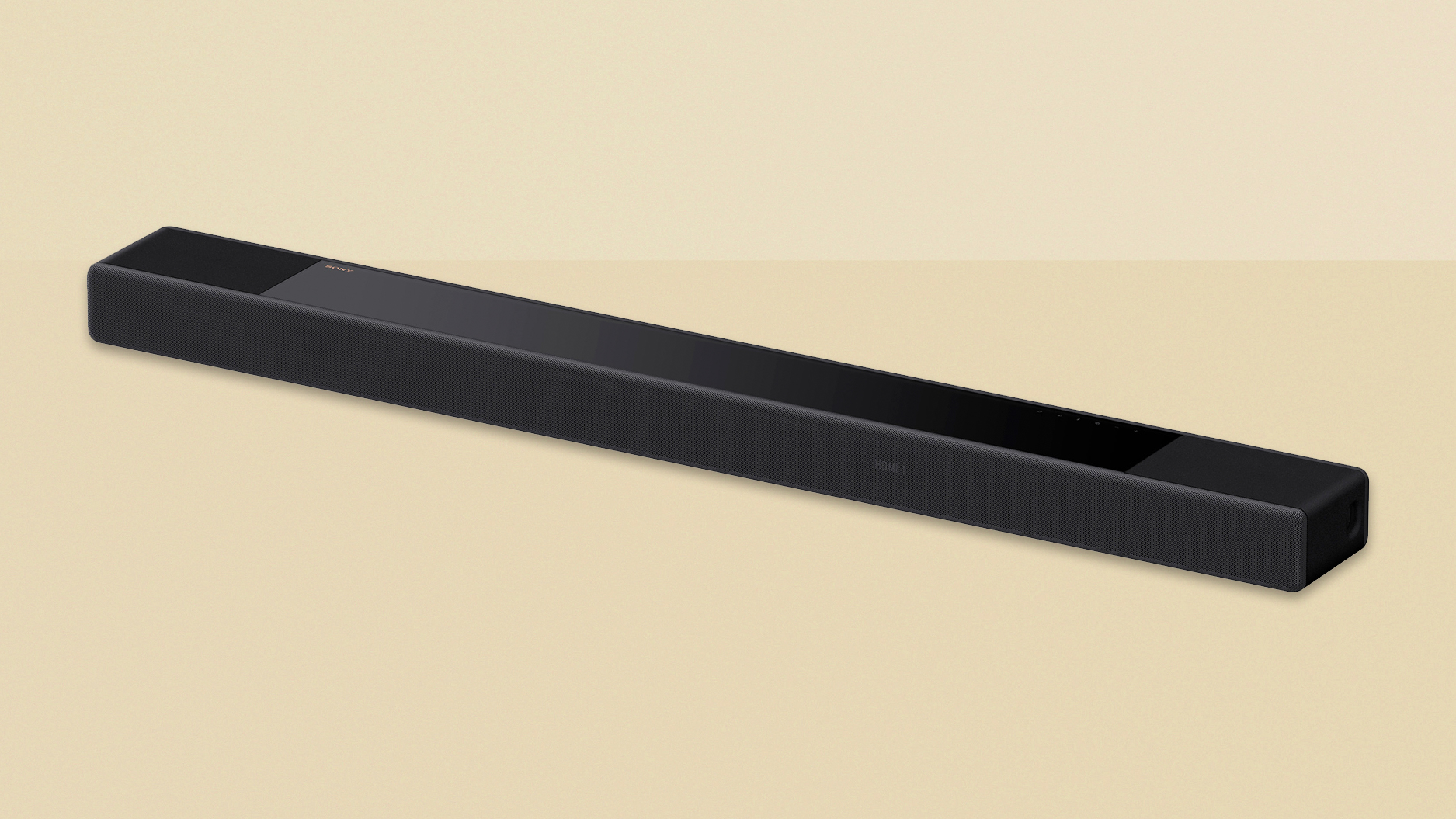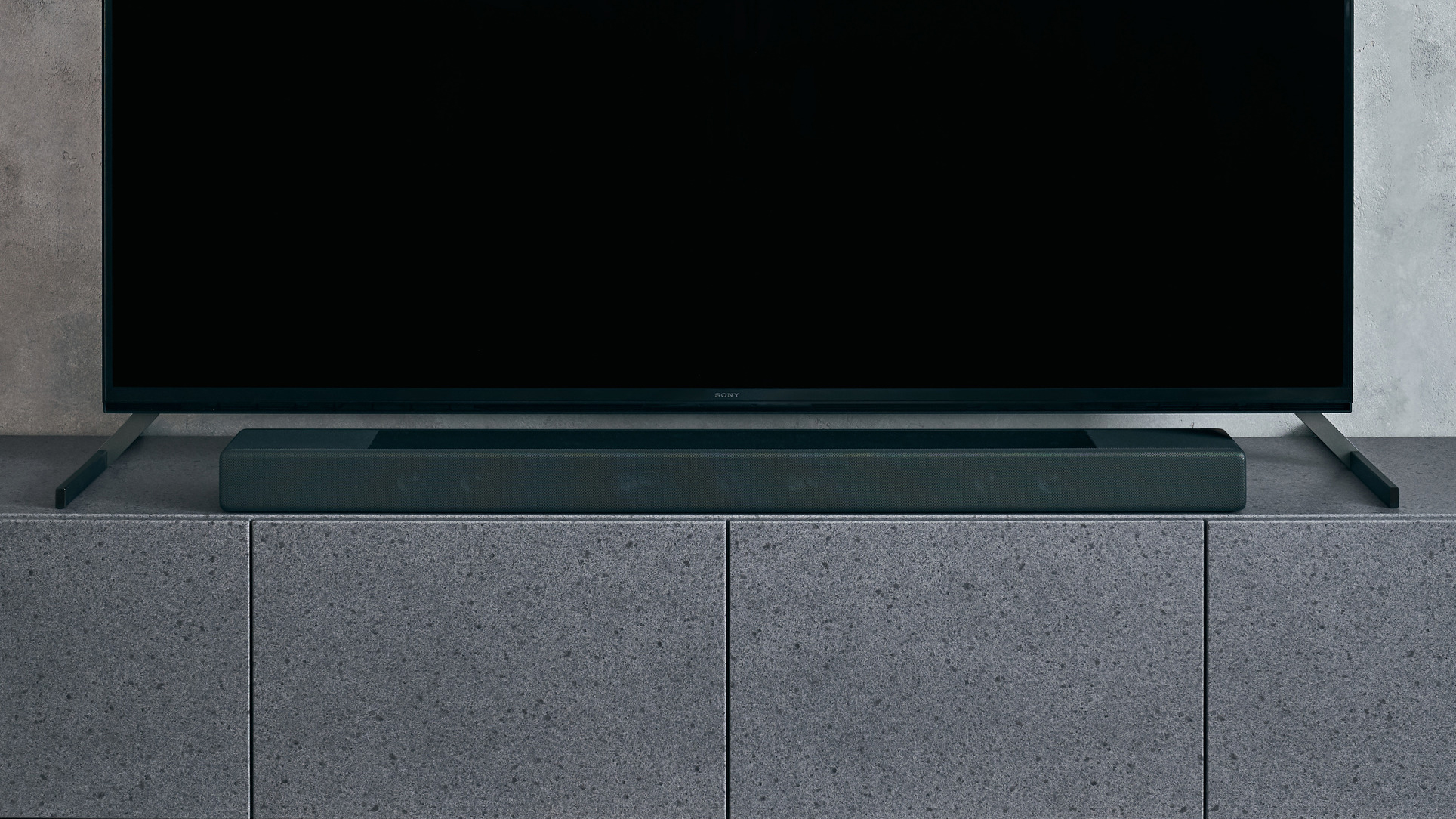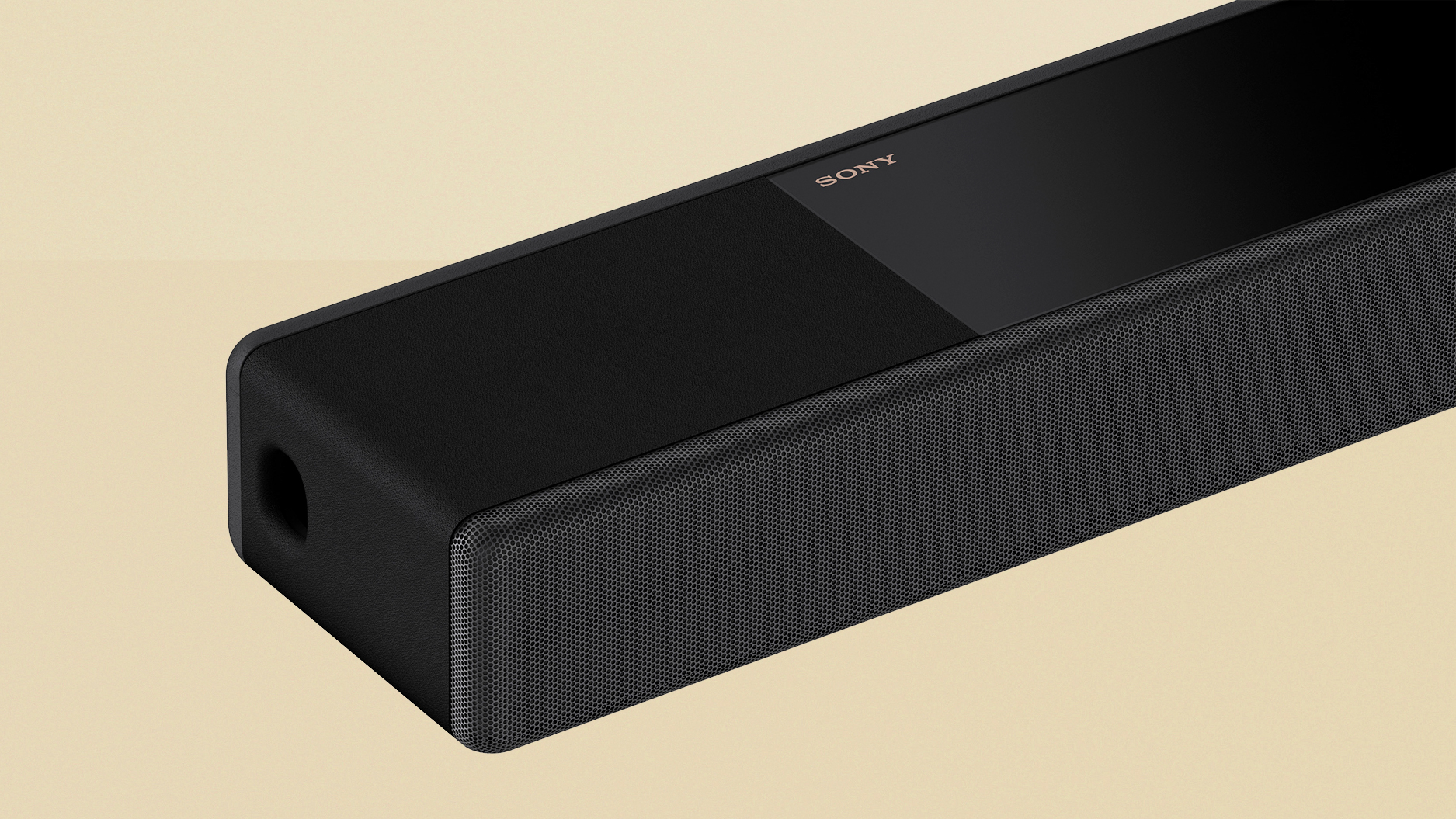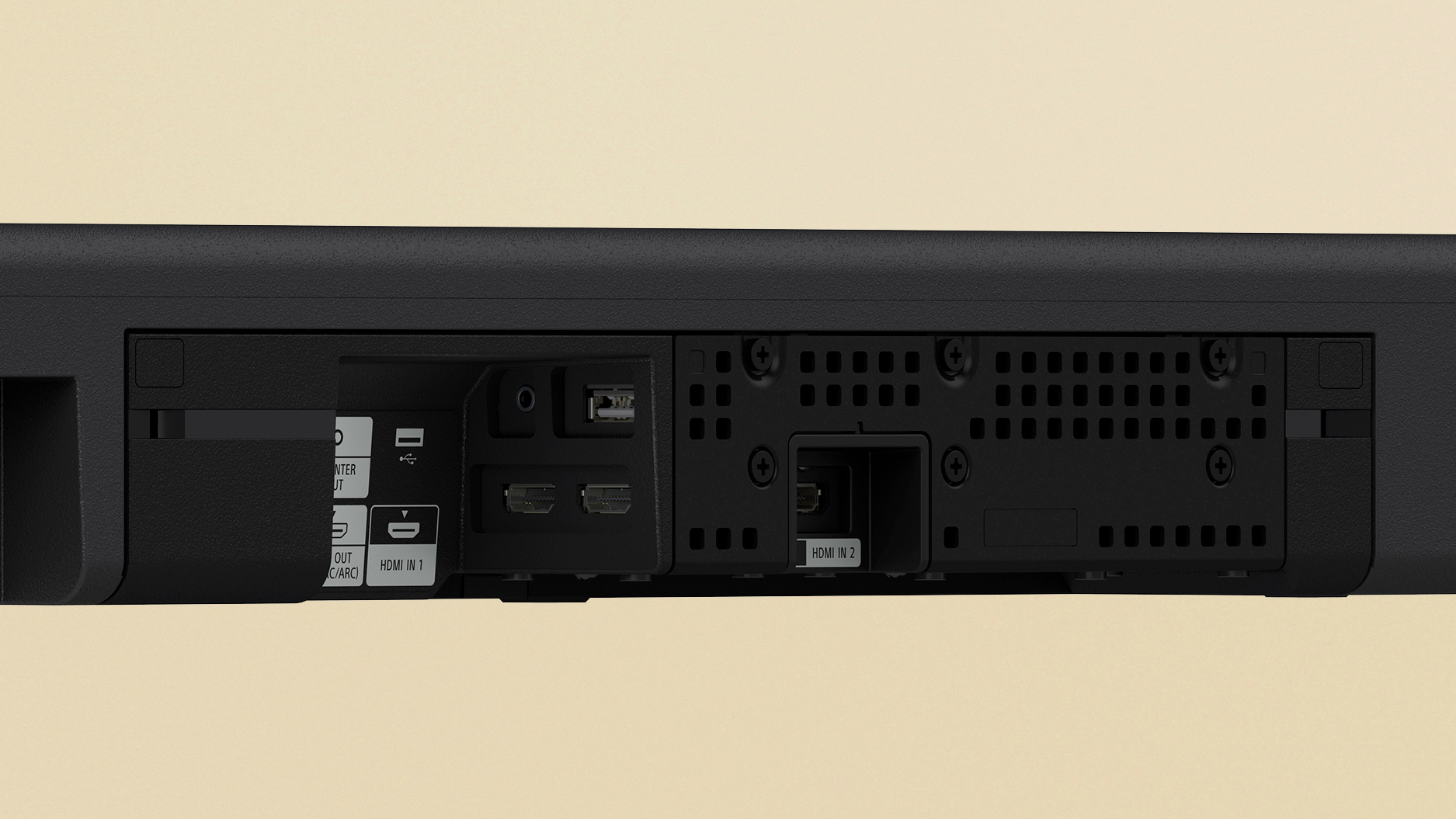Sony HT-A7000 review: a Dolby Atmos soundbar that's both big and clever
The Sony HT-A7000 delivers huge sound (and even good bass) from a single box – and has future-proofed connectivity as a bonus


The Sony HT-7000 might be expensive, but it's serious impressive. The tall and impossibly wide Dolby Atmos audio with tight sound positioning is as good as we've heard from any system without rear speakers, and it even manages a good dose of bass. The HDMI 2.1 connections are very welcome, too.
-
+
Punchy, expansive sound
-
+
Real height and width to Atmos
-
+
Extensive specification
-
-
Lacks complete HDMI 2.1 feature-set
-
-
Oddly disjointed looks
-
-
Not the easiest soundbar to accommodate
Why you can trust T3

In this Sony HT-A7000 review, we're taking a long, hard listen to a truly impressive Dolby Atmos-enabled soundbar. The ‘entire Dolby Atmos audio system in a single enclosure’ concept is not a new one – Sony’s done this sort of thing before, and so have its most obvious rivals (as well as a few slightly less obvious rivals, too).
The Sony HT-A7000's real trick, though, is to do it properly. It’s one thing to fill one of the best soundbars with multiple drivers and a lot of amplification, it’s quite another to extract the sense of width, height and low-end wallop that your typical Dolby Atmos soundtrack thrives on. Sennheiser can do it (for far more money than this, admittedly). LG, Samsung, Sonos and Yamaha have all had successes to a lesser or greater extent, too.
You’ll need space beneath your TV, because this Sony soundbar is relatively tall. And you’ll need a biggish TV too, because this soundbar is almost ostentatiously wide. But if you can accommodate it, and afford the not-inconsiderable asking price, the Sony HT-A7000 is incredibly hard to resist, in sonic terms at least. In aesthetic terms, maybe not quite so much.
Sony HT-A7000 review: price & release date
The Sony HT-A7000 is on sale now, and costs £1,299/$1,399/AU$1,699. That's serious money by soundbar standards – even Sony itself makes bars with Dolby Atmos enabled for under £400/$400/AU$600.
And it’s not like the Sony is the only game in town. We’re big fans of the Sonos Arc, a very capable Atmos soundbar that comes in below the four-figures mark, and the Bose Smart Soundbar 900 is no slouch either. Add in the always-competitive likes of LG, Samsung and Yamaha, and the HT-A7000 is going to have to do a bit more than show up to earn its stars.
But there's some great feature support here that could make it worth the price for you – as well as excellent sound quality.

Sony HT-A7000 review: features & what's new
The Sony HT-A7000 is a single-box soundbar – meaning that it does everything from the bar itself. No wireless sub, no wireless rear speakers.
Get all the latest news, reviews, deals and buying guides on gorgeous tech, home and active products from the T3 experts
Just like the Sonos Arc (which is its biggest rival as a single-box soundbar), the Sony HT-A7000 can optionally be partnered with a subwoofer and wireless speakers to create a true surround-sound audio system. But just as with the Sonos Arc, that’s rather beside the point – after all, if you wanted a complete system, you could just buy something like the Samsung HW-Q950A that's designed around that, wouldn't you? And besides, the HT-A7000 is as thoroughly specified as a full-on home cinema audio system as many multi-box rivals – more so, in some ways.
The Sony intends to deliver a 7.1.2 multichannel audio effect – that’s seven front-and-side channels, a subwoofer channel and two height channels. To this end it features an integrated subwoofer, two upward-firing ‘racetrack’ drivers to produce the crucial sense of height, and seven drivers across the front of the bar. The three in the centre handle – hey! – centre-channel information, while the pair of tweeters at either end have their sound channelled out to the sides of the soundbar in order to give a sensation of width to the sound. A total of eleven channels of Class D amplification, packing an all-in total of 500 watts, provide the necessary oomph.
It’s worth noting that some Sony Bravia TVs can form part of the HT-7000’s centre channel by connecting the soundbar’s Acoustic Centre Sync output to the TV. Other physical inputs and outputs include a pair of HDMI 2.1 passthrough sockets (they’re not fully 2.1-compliant just yet, though – while 4K 120Hz passthrough is support (which is the really important one), ALLM and VRR will come via an update), an eARC-enabled HDMI output, analogue and digital optical inputs, and a USB-A input. Naturally there’s Wi-Fi on board too, and wireless options are provided by Chromecast, Apple AirPlay 2 and Spotify Connect.
This HDMI connectivity is a real crowning glory here – the Sonos Arc doesn't have any HDMI passthrough option, let alone support for HDMI 2.1 (which is still rare in soundbars). If you have a TV with a limited number of HDMI 2.1 ports and you're a gaming fan, it instantly makes the Sony HT-A7000 much more tempting.
As set-up and room calibration go, they’re swift, painless and commendably accurate. And once they’re done, the HT-A7000 supports all the headline audio formats, including Dolby Atmos and DTS:X, as well as LPCM and Sony’s 360 Reality Audio spatial algorithm. This last will make the most of the object-based audio mixes available on Amazon Music HD, Deezer and TIDAL.

Sony HT-A7000 review: performance
Let’s get to the goods, shall we? With the HT-A700, Sony has combined physical driver placement with digital sound processing to very successful effect.
Fire up a Dolby Atmos soundtrack and it doesn’t take long for this soundbar to establish its credentials. The Sony’s not a magician, of course, so the sound it makes can only come from in front of you – but even though the A7000 is a very wide soundbar, the sound it delivers is considerably wider. If you have surfaces reasonably close to the ends of the soundbar (where its acoustic chambers terminate) you might even be fooled into thinking there are drivers almost alongside your seated position.
The sonic height the Sony generates is, if anything, even more impressive. Again, you’re not about to be tricked into thinking there are speakers above you, but the sound the A7000 makes escapes both its physical confines and that of the screen you’re watching to an almost comical degree. There’s a strong sense of verticality to the sound – and it’s in no way equivocal. The Sony generates a soundstage of frankly unlikely height and width, and manages to position and isolate specific effects really convincingly as it does so.
And it’s equally cinematic elsewhere. There’s really dynamic potency on display, so when the going switches from ‘very quiet’ to ‘very loud indeed’ (as it surely must in any modern movie soundtrack at some point) the A7000 breathes deeply enough to make the difference explicit.
It’s very detailed in general, and especially through the midrange/centre channel – so dialogue is plain, easy to follow and packed with character. The integrated subwoofer generates eye-widening levels of bass response for a one-box soundbar. Yes, this is a big unit, but it doesn’t automatically follow that it should have this degree of low-frequency extension and control.
And despite all its very many tweeters, the Sony shows expert judgement where treble sounds are concerned – there’s bite and crunch to the top end, but it’s properly controlled and never impolite.
It’s a similarly civilised device where music is concerned, too, with just a few caveats regarding Sony’s 360 Reality Audio format. Broadly speaking, there’s good integration of the frequency range (despite the A7000’s numerous drivers), proper spaciousness and impressive dynamism to the presentation, and better timing and unity than our experience with soundbars as music speakers has primed us to expect. It’s a coherent and enjoyable listen.
Or, at least, it is with stereo information. Sony’s spatial audio format is rather more hit-and-miss – music can sound overly processed and artificial, and in extremis the low frequencies gain a lot of ill-deserved confidence. But let’s face it, no £1K+ soundbar ever stood or fell on its ability to deliver music – the movie part is impeccable, and that's what care about most.

Sony HT-A7000 review: design & usability
This is a fairly hefty soundbar. It’s 130x14x8cm, which means it’s a) quite tall, so won’t automatically sit below any old TV (check the height of your stand, people!); and b) so wide that it looks a bit daft and overgrown if it’s accompanying TVs any smaller than 55 inches.
And those proportions aren’t mitigated in the slightest by Sony’s decision to use a number of different materials – perforated metal for the front grille, acoustic cloth covering the top corners and side-panels, glass across the rest of the top surface – in the HT-A7000’s construction. Not only does it look a bit like one soundbar has crashed into another, but if you position the ‘bar directly beneath your TV the glass proves reflective.
The HT-A7000 is compatible with Amazon Alexa, Apple HomeKit and Google Home too – and if those voice-control options aren’t enough to get you what you want, there’s a reasonably thorough remote control handset and compatibility with Sony’s Music Center app too. The glass portion of the top surface features a few capacitive touch-controls, and there’s a brief-but-distinct scrolling display on the front panel.

Sony HT-A7000 review: verdict
There's no question this produces stunning home cinema sound for a one-box soundbar. Meaningful bass without a subwoofer, scale and direction without rear speakers.
Really, your biggest considerations are size: of the soundbar itself and of the price-tag attached to it. If neither of these things is an obstacle, then there’s nothing to prevent you giving the Sony HT-A7000 some serious consideration – it’s a hugely capable and endlessly listenable addition to your home setup.
And gamers should give it special consideration, because its support for HDMI 2.1 features means it really future-proofs you for having multiple next-gen consoles.
Sony HT-A7000 review: Also consider
The Sonos Arc is really the major competition here. It's less expensive (by enough money to buy a couple of Sonos One units to use as wireless rear speakers), and lacks a few operational niceties that the Sony HT-A7000 offers (the Arc's lack of HDMI pass-through is straight-up bizarre) but has nothing to apologise for where performance is concerned. And if you’re already in the Sonos ecosystem, Arc goes from ‘definite option’ to ‘more-or-less compulsory’. Here's our full Sonos Arc review.
The other one-box soundbar in the same price range as the Sony HT-A7000 we like is the Bang & Olufsen Beosound Stage. It's very stylish, and sounds wonderful with movies or music. It's possibly even harder to accommodate than the Sony, but especially if you'll wall-mount, it offers a great combination of looks and performance. Here's our five-star B&O Beosound Stage review.
Simon Lucas is a freelance technology journalist and consultant, with particular emphasis on the audio/video aspects of home entertainment. Before embracing the carefree life of the freelancer, he was editor of What Hi-Fi? magazine and website – since then, he's written for titles such as Wired, Metro, the Guardian and Stuff, among many others. Should he find himself with a spare moment, Simon likes nothing more than publishing and then quickly deleting tweets about the state of the nation (in general), the state of Aston Villa (in particular) and the state of his partner's cat.
